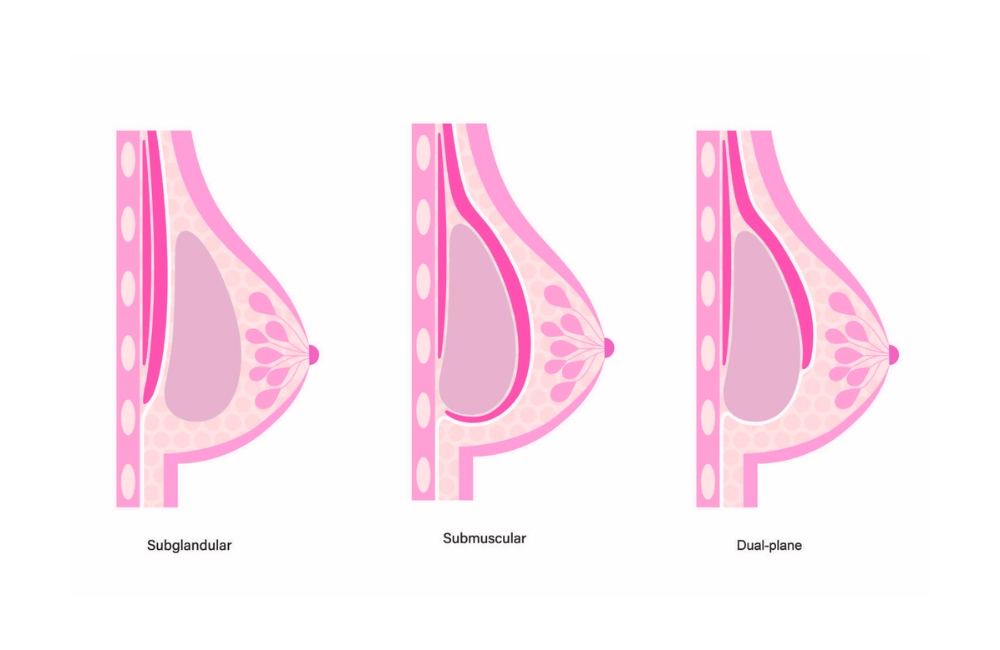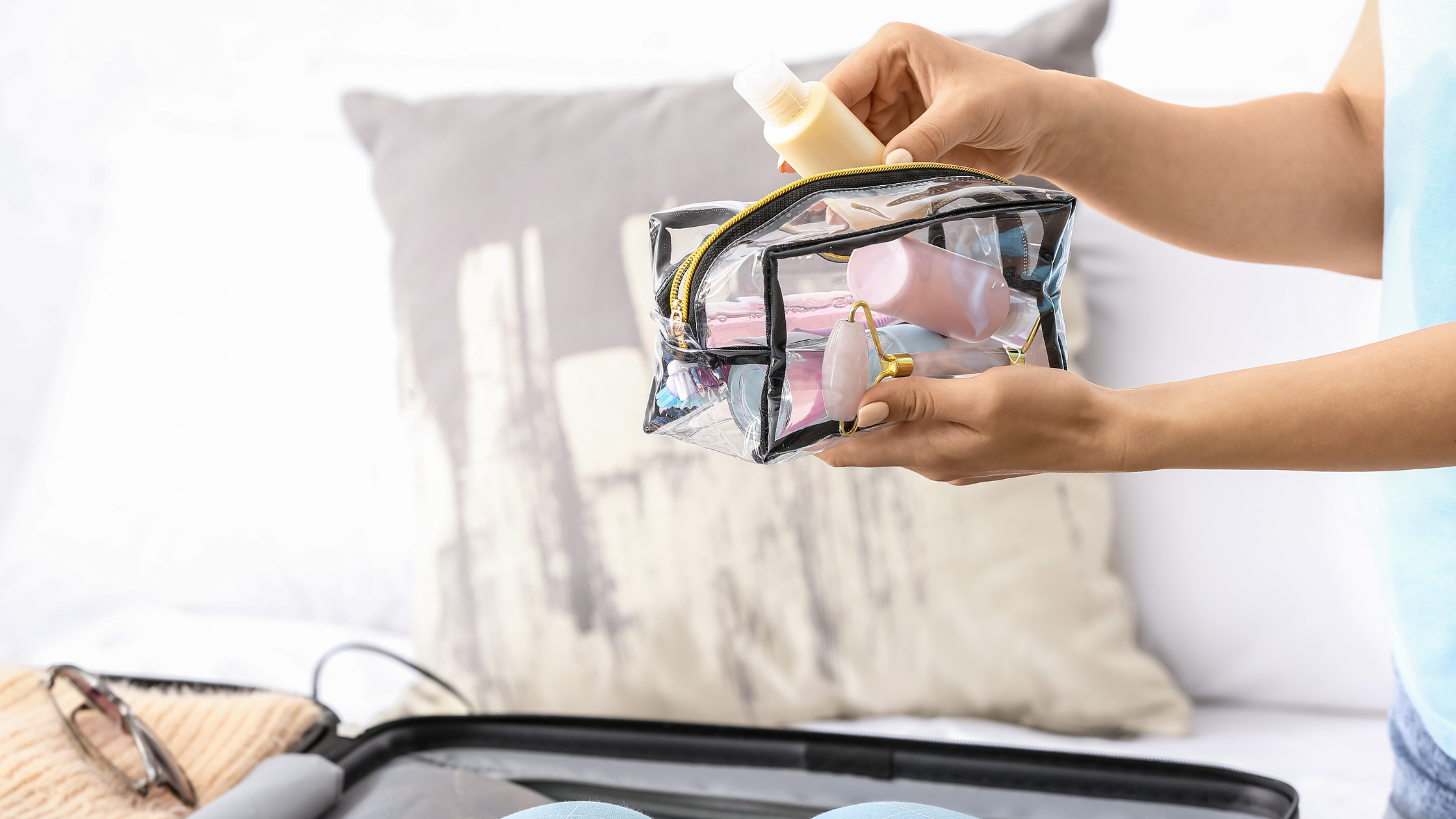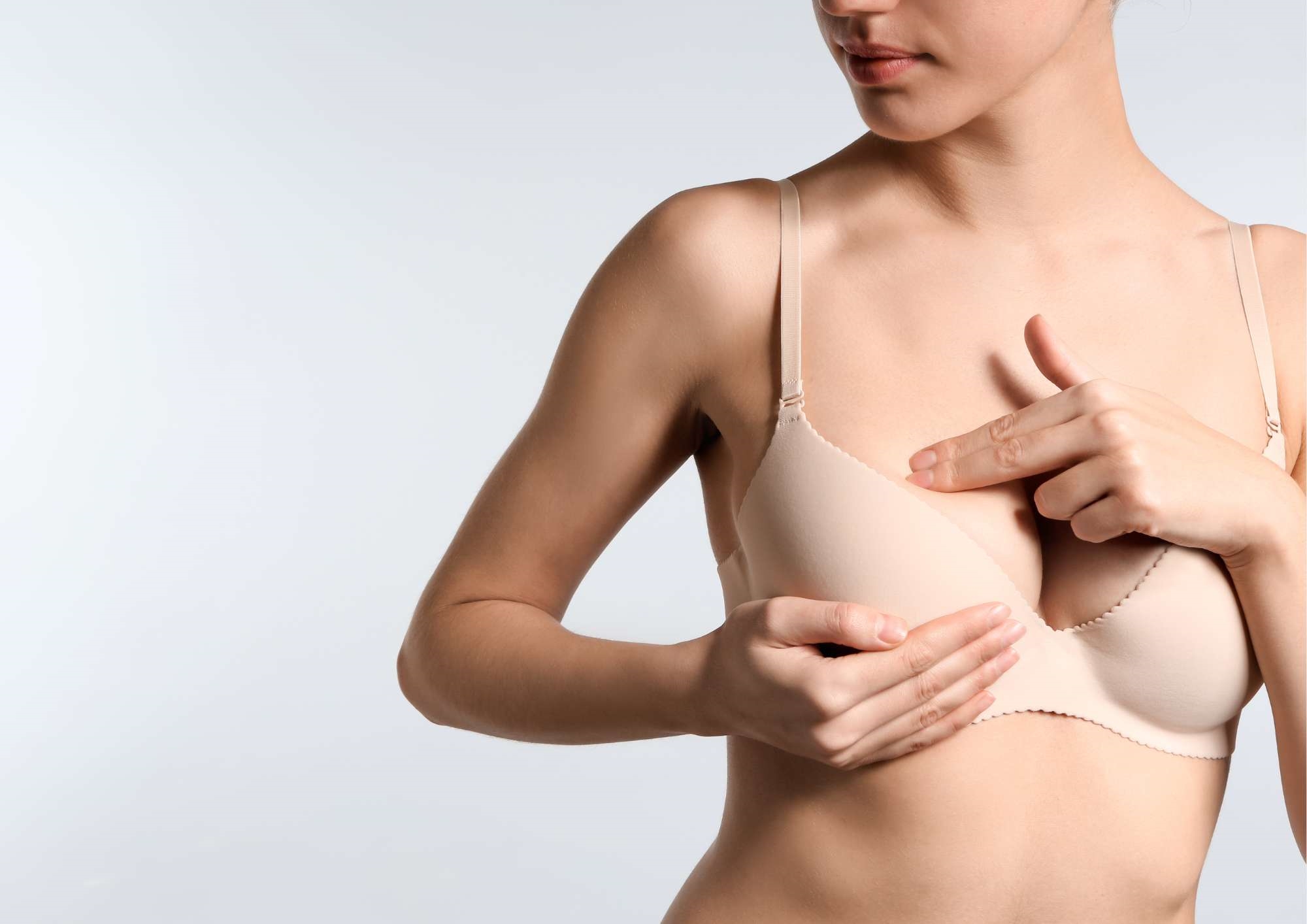Breast implant placement is one of the most important decisions to make when considering a Breast Enlargement procedure. The positioning of the implant - whether placed over the muscle (subglandular) or under the muscle (submuscular) - can significantly impact the look and feel of your results, your recovery experience, and your overall satisfaction. Each placement method offers distinct advantages, and the right choice depends on factors like your body type, aesthetic goals, and lifestyle.
At Pall Mall Cosmetics, we guide patients through these options, ensuring that every individual is fully informed and supported in making the best decision for their unique needs. In this article, we will explain the differences between these techniques, their benefits and drawbacks, and how to determine which approach is right for you.

Submuscular (under the muscle) placement
Submuscular placement involves positioning the breast implant beneath the chest muscles, specifically under the pectoral muscle. This method is often recommended for individuals who have thinner breast tissue or less natural volume in their breasts, as the muscle provides additional coverage over the implant, resulting in a more natural look. Mr Krishnan, our Consultant Oncoplastic and Cosmetic Breast surgeon, explains, “This placement can help create a more gradual slope to the upper breast, which is often desired for a softer, more subtle enhancement.”
Mr Krishnan continues, “Because the implant is placed under the muscle, this method tends to reduce the risk of visible rippling or wrinkling of the implant, especially in slimmer patients. It also makes it easier for mammograms to be performed in the future since the muscle helps separate the implant from the breast tissue. However, submuscular placement can lead to a longer recovery period due to the muscle manipulation involved in the surgery. Patients may experience more discomfort and tightness in the chest in the days following surgery, and it can take a few months for the implants to settle into their final position.”
Advantages
Natural appearance: The muscle provides extra coverage for the implant, resulting in a more natural look and feel, particularly for those with less natural breast tissue.
Lower risk of rippling: The additional tissue between the implant and skin reduces the chances of visible rippling or wrinkling, especially in slender patients.
Better for mammograms: Implants placed under the muscle can make breast tissue more accessible during mammograms, improving the accuracy of breast cancer screenings.
Disadvantages
Longer recovery: The surgery involves cutting and manipulating the chest muscle, leading to a more extended recovery time and potentially more post-operative discomfort.
Implant settling time: Implants placed under the muscle may take several months to settle into their final position, meaning it may take longer to see the final results.
Movement with muscle contraction: In some cases, the implants may move slightly when the chest muscles are flexed, which can create a temporary distortion of the breasts during activities like exercising.
Subglandular (over the muscle) placement
In subglandular placement, the breast implant is positioned above the chest muscle but beneath the breast tissue. This technique is often used for patients who have sufficient natural breast tissue to provide adequate coverage for the implant. Subglandular placement typically results in a more pronounced, rounded upper breast appearance, making it a popular choice for those looking for a more dramatic enhancement or "push-up" effect.
One of the key benefits of over-the-muscle placement is that it generally involves a shorter recovery time compared to submuscular placement. Since the chest muscles remain untouched, patients often experience less post-operative pain, and the implants tend to settle more quickly into their final position. Subglandular placement can also allow for a greater range of implant shapes and sizes to be used, giving patients more flexibility in achieving their desired look. However, for patients with thinner breast tissue, there may be a higher risk of the implant edges being visible or palpable, particularly over time. This placement can also be associated with a higher risk of implant rippling or wrinkling, and in some cases, it may make future mammograms more challenging.
Advantages
Shorter recovery time: Because the surgery doesn’t involve the chest muscles, the recovery period is generally shorter, with less postoperative pain.
Faster implant settling: Over the muscle breast implants tend to settle into their final position more quickly, allowing patients to see their results sooner.
More upper breast fullness: Subglandular placement typically creates a more rounded, prominent upper breast, which can give a "push-up" effect without the need for a bra.
Disadvantages
Higher risk of rippling: Without the extra muscle coverage, there’s a greater chance that the edges of the implant may be visible or felt through the skin, especially in patients with thinner breast tissue.
Less natural look for certain body types: For those with minimal natural breast tissue, this placement may result in a less natural appearance, as the implant is more prominent.
More challenging mammograms: Because the implant is closer to the breast tissue, it may interfere with mammogram imaging, potentially making breast cancer screenings more difficult.
Dual plane placement
Dual plane placement combines the benefits of both submuscular and subglandular placements. In this technique, the upper portion of the implant is placed beneath the chest muscle, while the lower part of the implant rests directly under the breast tissue. This method allows for the natural contouring benefits of submuscular placement while also providing the fullness of subglandular placement in the lower breast.
Dual plane placement is often recommended for patients who want a natural look but also desire enhanced fullness in the lower portion of the breast. It can also be an excellent option for women with mild sagging, as it allows for some lifting of the breast tissue without the need for a breast lift.
Advantages
Best of both worlds: This placement method offers a balance of natural-looking upper breast and fuller lower breast, making it ideal for patients seeking both subtlety and enhancement.
Addresses mild sagging: The dual plane approach can help lift the breast tissue, offering some of the benefits of a breast lift without the need for additional surgery.
Versatile option: It’s suitable for a wide range of patients, including those with minimal breast tissue, as it provides extra coverage from the chest muscle while still enhancing volume.
Disadvantages
More complex surgery: The dual plane technique is more intricate, which may result in a longer surgery and potentially a more extended recovery period.
Implant settling: Like submuscular placement, it may take time for the implants to fully settle, meaning the final results might not be visible immediately.
How to decide which implant placement is right for you
Choosing the right implant placement is a highly personal decision, and several factors will influence the best option for you. Your body type, natural breast tissue, desired look, and lifestyle all play a role in determining whether submuscular, subglandular, or dual plane placement is the right fit. Additionally, the type of implant you choose, whether silicone or saline, may also affect the placement decision.
At Pall Mall, our experienced surgeons will assess your anatomy and discuss your cosmetic surgery goals during your free, no obligation consultation to guide you towards the best option. Your surgeon will also consider factors like your activity level, as more active individuals might benefit from one type of placement over another. Ultimately, the goal is to achieve a balanced, natural-looking result that aligns with your expectations.
Deciding on the right breast implant placement can feel overwhelming, but with the guidance of an expert surgeon, you can make the best choice for your body and goals. At Pall Mall, we offer personalised consultations where you can discuss your options in detail and get advice tailored to your needs. Our priority is ensuring you feel informed and confident in your decisions.






